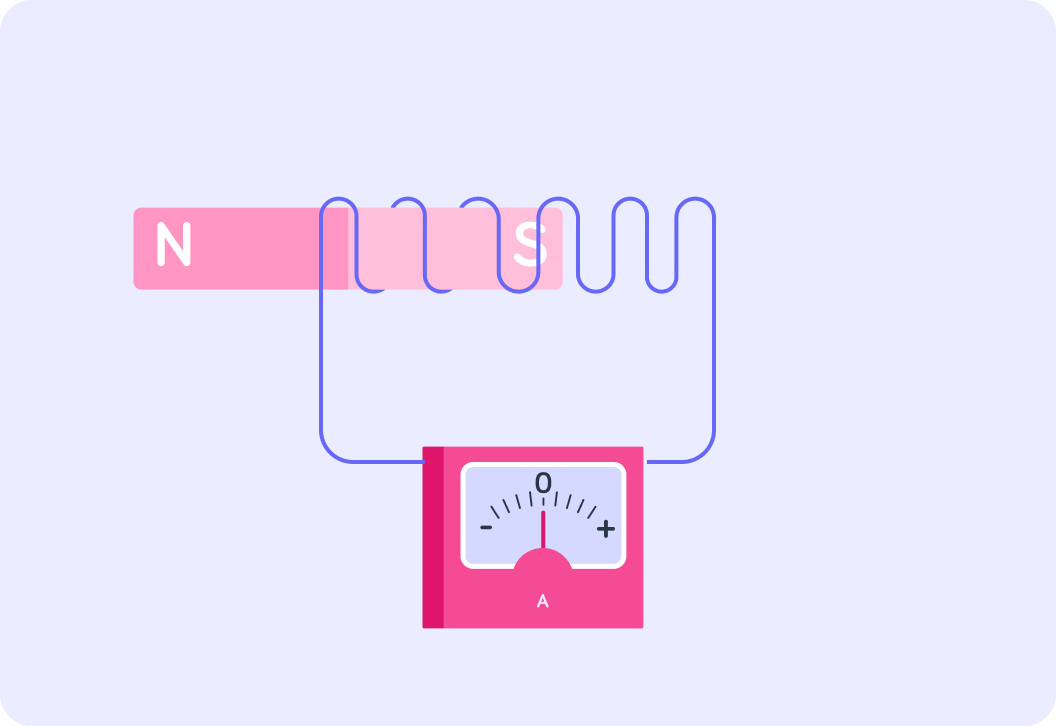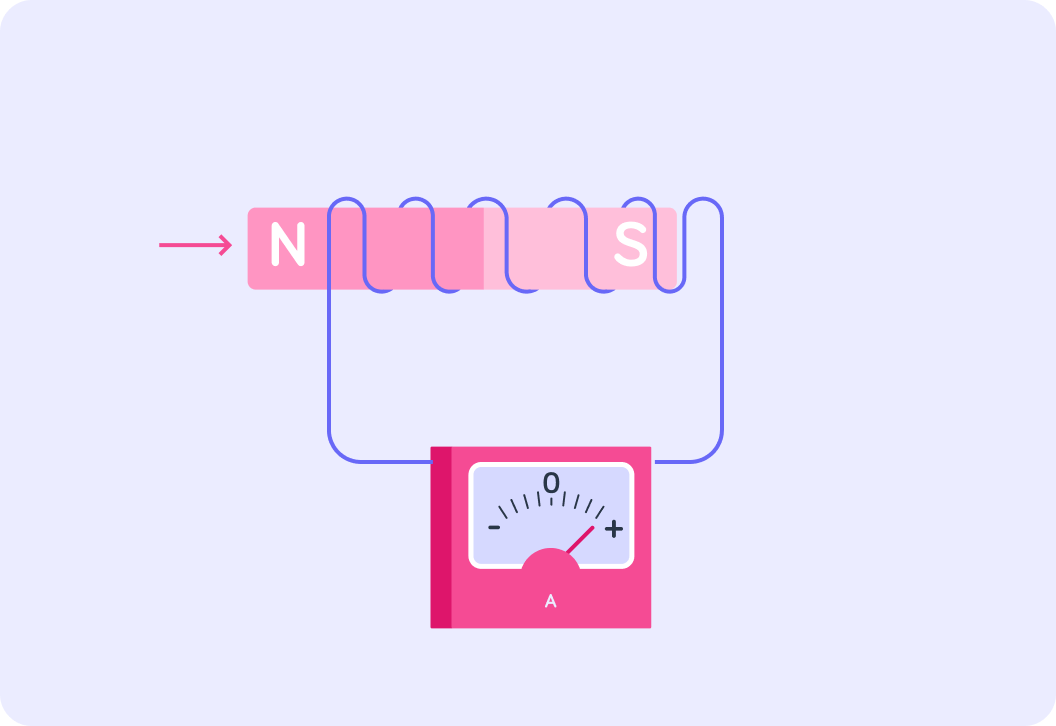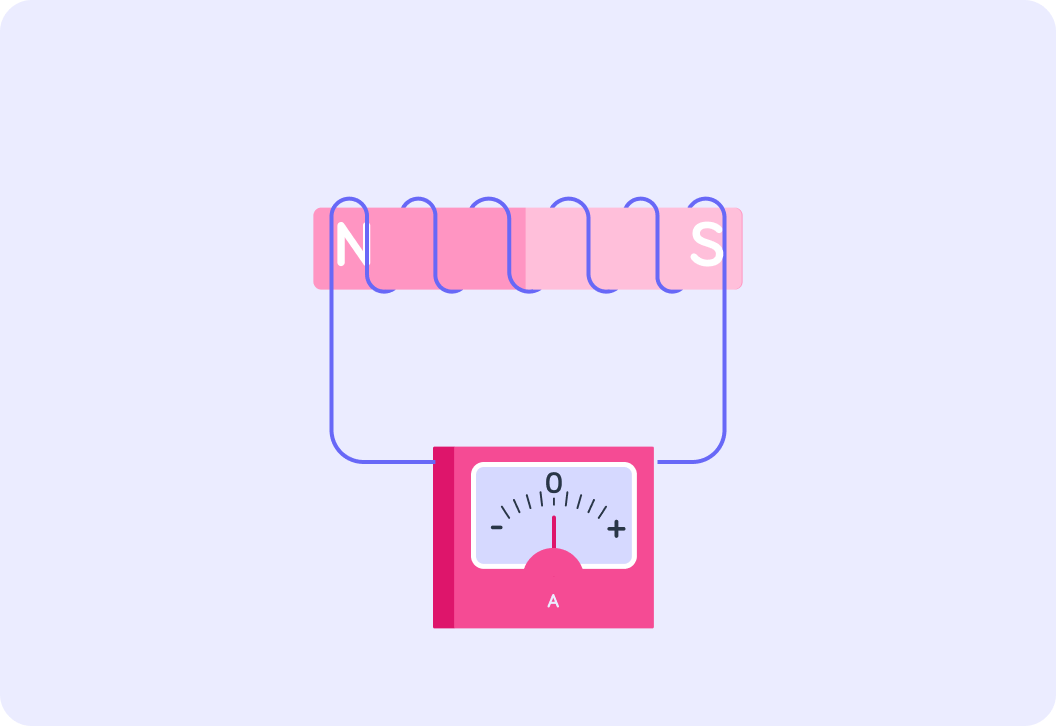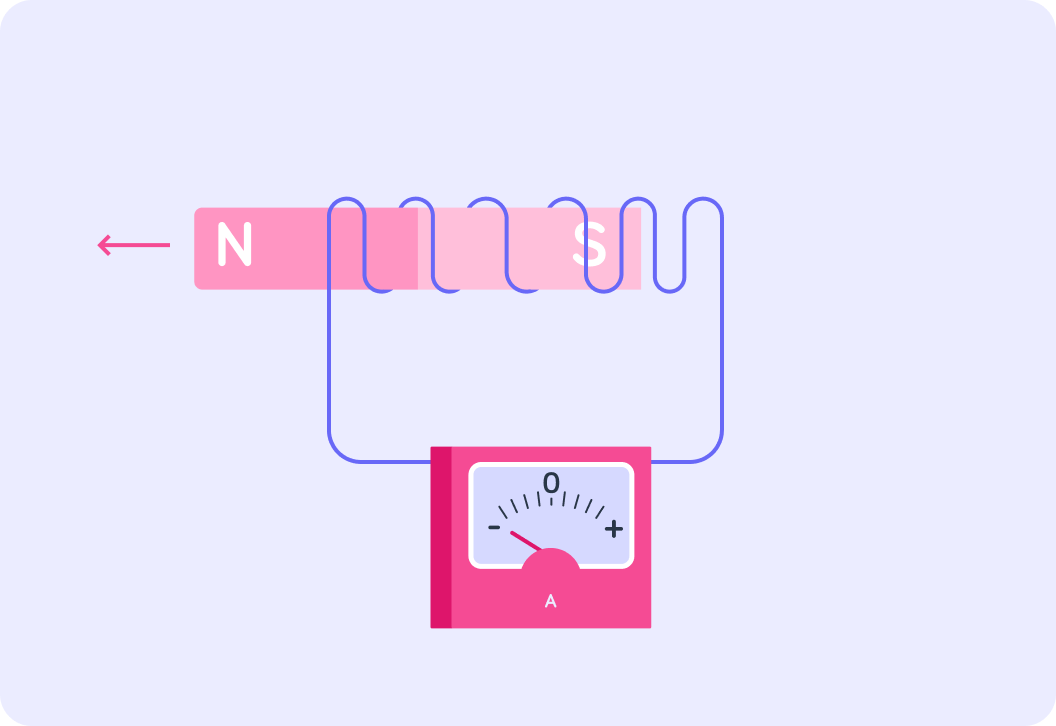YOU ARE LEARNING:
What Is the Generator Effect?

What Is the Generator Effect?
We can induce voltage in a wire by moving a magnetic field relative to the wire.
What is it that makes a current move around a circuit?

How can you induce potential difference across a current-carrying conductor? Pick all the options you think are correct.

You can select multiple answers
What do we call it when we induce potential difference in a current-carrying conductor?

What do you think might be another name for electromagnetic induction?

The generator effect describes how we can generate a potential difference with electromagnetism. There are two ways this can be done.
First, we can move a closed-circuit wire through a stationary magnetic field.
This generates a current through the wire!
Secondly, we can move a bar magnet through a closed-circuit coil of wire.
This also generates a current through the wire! We will now look at an experiment that demonstrates this effect.
But first, can you remember what we use to measure the current in a circuit?

What is the current, when the magnet is stationary?


As the magnet moves further into the coil, what happens to the current reading on the ammeter?
A) Increases B) Decreases C) Stays the same


What happens to the current reading on the ammeter when the magnet has moved fully into the coil and has stopped moving?
A) Positive B) Negative C) Back to zero


As the magnet is moved back out of the coil, what happens to the current reading on the ammeter?
A) Positive B) Negative C) Zero


As we move the magnet in and out of the coil of wire the ammeter reading changes.
As the magnet moves into the coil, the ammeter shows a positive current. As it moves out of the coil, the ammeter shows negative current. When the magnet is stationary, there is zero current.
This shows how a magnet moving in and out of a closed-circuit coil of wire generates current through the wire.

